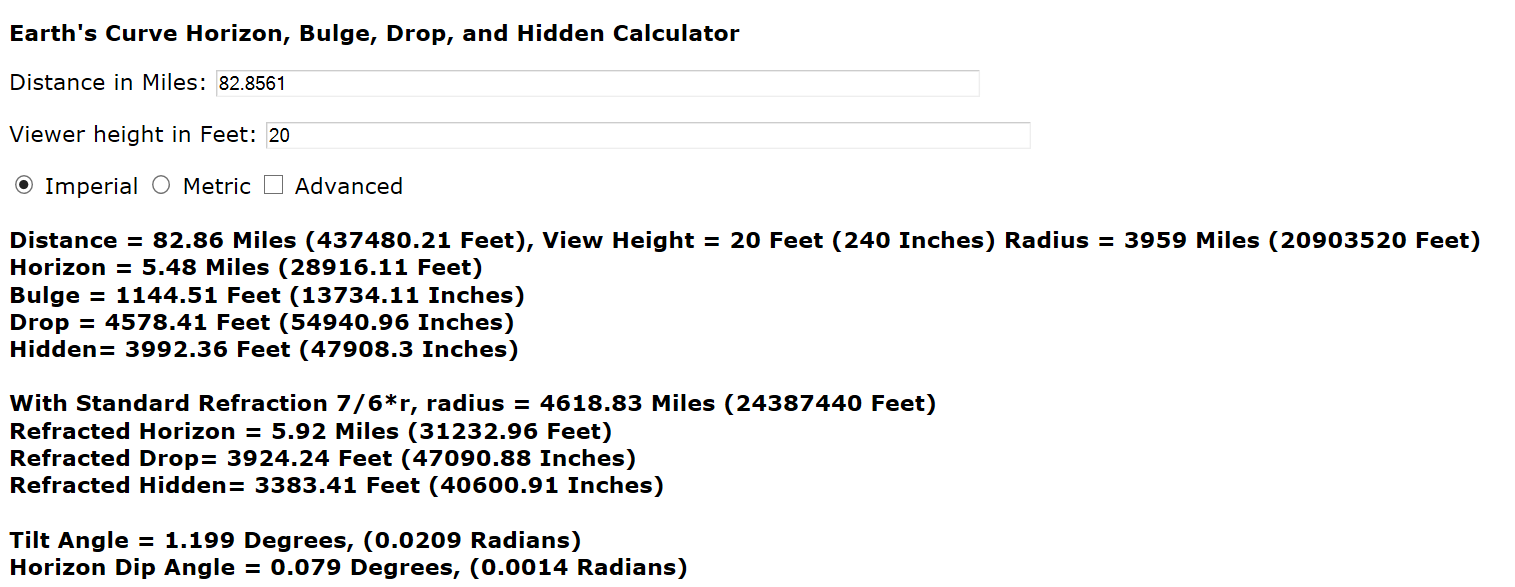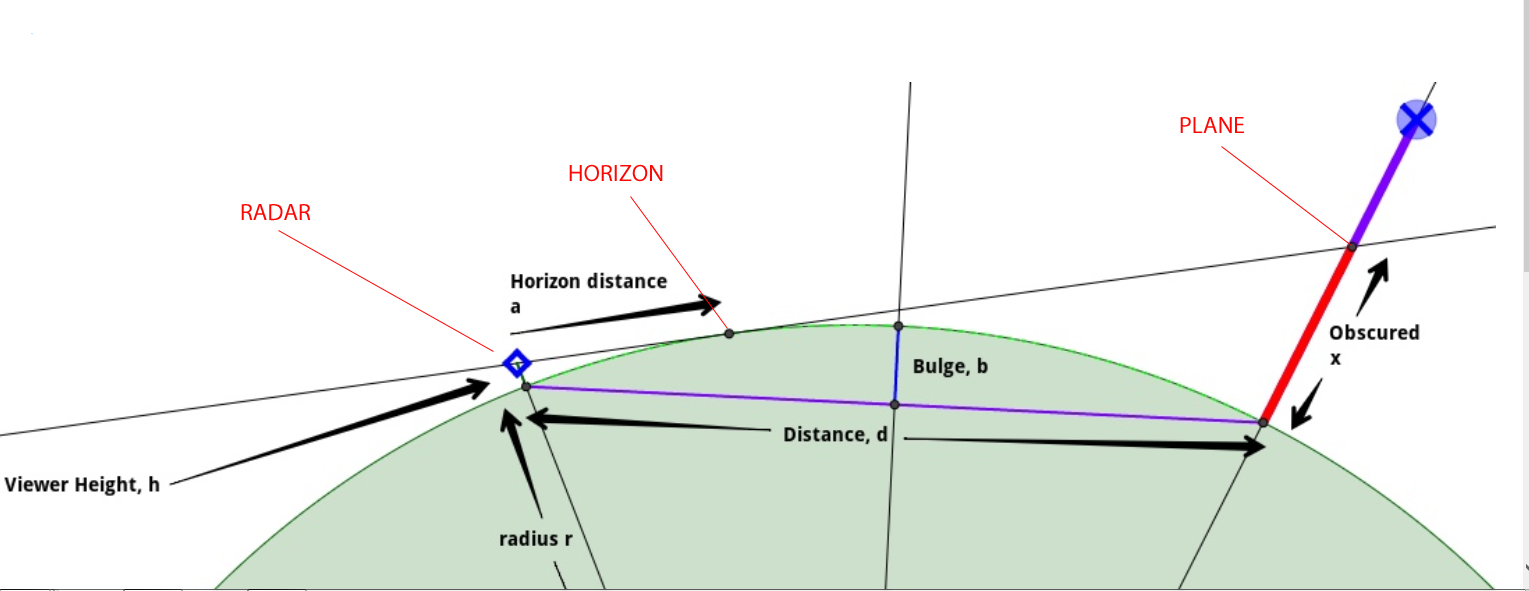The original claim was that radar signals do not bend. Subsequent investigation showed that they do bend due to atmospheric refraction, which allows them to detect targets beyond the geometric horizon, see, for example:
http://msi.nga.mil/MSISiteContent/StaticFiles/NAV_PUBS/APN/Chapt-13.pdf
See also:
https://en.wikipedia.org/wiki/Radar_horizon
http://msi.nga.mil/MSISiteContent/StaticFiles/NAV_PUBS/APN/Chapt-13.pdf
Additionally the mounted height of the radar must be taken into account.If the radar waves traveled in straight lines, the distance to the radar horizon would be dependent only on the power output of the transmitter and the height of the antenna. In other words, the distance to the radar horizon would be the same as that of the geometrical horizon for the antenna height. However, atmospheric density gradients bend radar rays as they travel to and from a target. This bending is called refraction.
See also:
https://en.wikipedia.org/wiki/Radar_horizon
As a former US Navy radar tech/operator I know for a fact radar signals do not bend but yet radar can detect targets well beyond the supposed horizon.
I am talking commercial radars not military OTH radar which supposedly bounces the beam off the ionosphere.
Check the specs on a commercial radar, for this example I am using the Garmin Fantom 4 radar. Garmin specs indicate targets can be detected out to 72 miles. At that distance the drop according to metabunk is over 3000 feet. So it is impossible if there is a drop because radar works off of line of sight. The beam in this case according to Garmin is 1.8 degrees. The rf energy beam goes straight out hits the target and bounces straight back to the antenna.
There are commercial radars that their specs state the radar can detect targets as far away as 177 miles away. The drop according to metabunk is nearly 4 miles. So it would be impossible!!!!
https://buy.garmin.com/en-US/US/p/533660
Last edited by a moderator:




